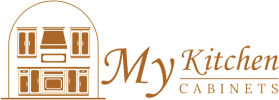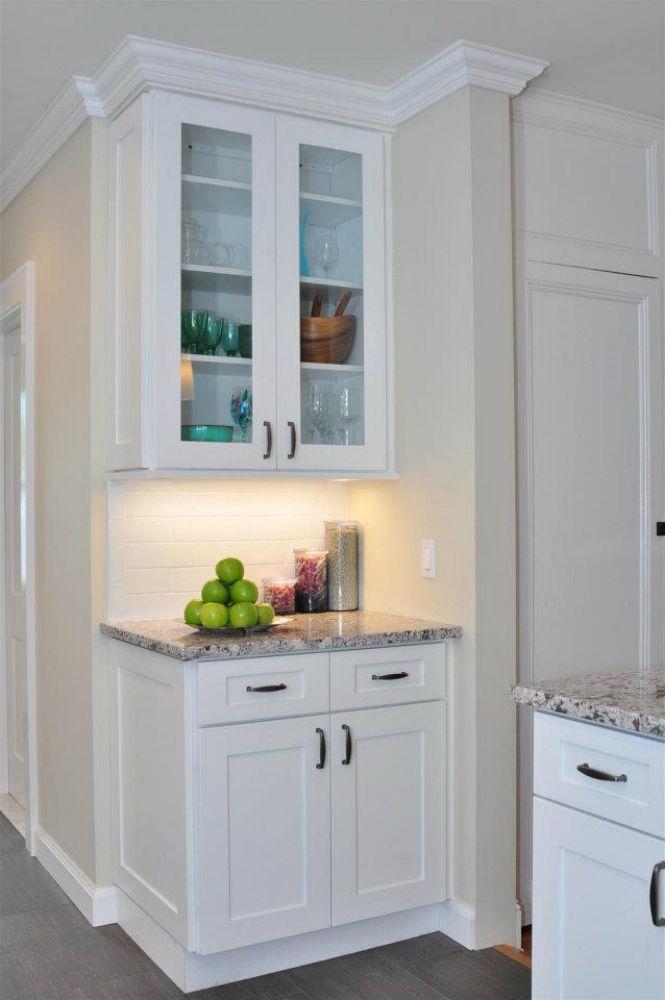Painting your cabinets can dramatically transform the look of your kitchen cabinets without the expense of a full remodel. However, one of the most debated steps in the process is sanding. Traditional wisdom dictates that you must sand surfaces before applying paint to ensure proper adhesion and a flawless finish, but advancements in primers, deglossers, and paint formulations have introduced alternatives. In this article, we’ll explore whether you can skip sanding, outline the best practices for prepping and painting your cabinets, discuss tools and techniques, and provide tips on maintenance. Whether you’re a DIY enthusiast or simply seeking a pet friendly project that won’t disrupt your household, read on to discover everything you need to know.
Understanding the Importance of Surface Preparation
Surface preparation is the cornerstone of any successful painting project. When you paint over existing finishes—especially glossy surfaces—the new coat may not adhere properly, leading to peeling, chipping, and uneven texture over time. Sanding roughs up the surface, creating microscopic grooves that give paint a mechanical grip. This is especially crucial for high-traffic areas such as cabinet doors and drawer fronts.
However, sanding can be labor-intensive, messy, and time-consuming. For many homeowners juggling busy schedules, the idea of filling rooms with fine dust and spending hours with sandpaper is unappealing. That’s where alternatives come into play, offering a compromise between professional-grade results and DIY convenience.
Exploring Alternatives to Traditional Sanding
If you’d rather not haul out the orbital sander, consider these less strenuous options:
-
Liquid Deglossers: Also known as liquid sandpaper, these chemical cleaners dissolve the gloss on enamel and lacquer finishes, creating enough surface “tooth” for primer adhesion.
-
Chemical Strippers: For severely damaged or thick old paint, a chemical stripper can remove layers down to bare wood or substrate, eliminating the need for mechanical abrasion.
-
Scuff Pads: Non-woven abrasive pads in fine grit can lightly abrade surfaces without gouging or creating as much dust as sandpaper.
-
Self-etching Primers: Certain primers contain acids that etch into metal and glossy surfaces, bonding without prior sanding.
Each alternative has pros and cons, and often the best results come from combining methods. For instance, applying a liquid deglosser followed by a self-etching primer can produce adhesion nearly as strong as traditional sanding and priming.
Using Primer and Deglosser Solutions
A high-quality primer is arguably more important than skipping sanding. Primers serve to seal porous surfaces, block stains, and ensure consistent paint adhesion. When forgoing sanding, you’ll want:
-
Deglosser: Apply according to manufacturer instructions—usually wipe on with a clean cloth, let it react, then wipe off residue.
-
Self-etching Primer: Ideal for slick surfaces. Its mild acid component etches the finish, promoting direct bonding.
-
Stain-blocking Primer: If your cabinets have knots, water stains, or previous paint bleed-through, a stain-blocking formula will prevent discoloration.
Always test a small, inconspicuous area first. If the primer adheres and no sanding marks appear, you’re ready to proceed to painting.
Choosing the Right Paint and Tools
Selecting quality paint and appropriate tools can make or break your project:
-
Acrylic Latex Paint: Water-based, low-odor, and easy to clean—ideal for indoor projects and households with pets.
-
Oil-based Enamel: Offers ultra-durable, hard finish but requires strong solvents and longer drying times.
-
Paint Sprayer vs. Brushes and Rollers: A paint sprayer yields the most professional, smooth finish but has a steeper learning curve and requires thorough masking. High-density foam rollers and angled sash brushes can produce excellent results with minimal brush marks.
When buying paint, choose a finish suited for cabinets—typically semi-gloss or high-gloss for easy cleaning and durability. Use a tack cloth after priming to remove any lingering dust or debris.
Step-by-Step Painting Process
-
Clean the Cabinets: Remove grease and grime with a degreasing cleaner or TSP substitute. Rinse and let dry completely.
-
Remove Hardware: Take off handles, knobs, and hinges. Label each piece for easy reassembly.
-
Use Deglosser: Wipe all surfaces with a liquid deglosser to dull any glossy finish.
-
Apply Primer: Use a self-etching or stain-blocking primer. Allow proper drying time per label instructions, typically 2–4 hours.
-
Sand Lightly (Optional): If you want to further ensure smoothness, lightly scuff with 220-grit sandpaper or a fine scuff pad.
-
Wipe with Tack Cloth: Remove any dust before painting.
-
First Paint Coat: Apply thin, even coats. If brushing, follow the wood grain. If spraying, hold the nozzle 6–8 inches away and keep it moving.
-
Dry and Light Sand Between Coats: Wait 4–6 hours, then scuff lightly with fine sandpaper or scuff pad for a flawless finish.
-
Second Coat: Repeat application. Some paints may require a third coat for full coverage.
-
Reassemble: Once fully cured—usually after 24–48 hours—reinstall hardware and doors.
Tips for Achieving a Smooth, Durable Finish
-
Maintain a dust-free environment: Close windows and doors, cover floors, and wipe surfaces before each coat.
-
Control humidity and temperature: Paint in moderate climates—ideally between 50°F and 85°F.
-
Use “pet friendly” products: Look for paints labeled low-VOC or zero-VOC to minimize odors that could disturb your pets.
-
Invest in quality tools: A good brush or roller pays dividends in smoothness and reduces the chance of brush strokes.
-
Patience pays off: Rushing between coats can trap moisture and cause bubbles or adhesion issues.
Maintenance and Care for Painted Cabinets
Once your cabinets look fresh and new, proper care will keep them that way:
-
Gentle Cleaning: Use a soft cloth and mild detergent. Avoid harsh chemicals that could strip the paint.
-
Spot Touch-ups: Keep leftover paint for quick repairs on chips or scratches.
-
Avoid Excess Water: Wipe spills promptly to prevent water from seeping under paint edges.
-
Re-lubricate Hinges: Periodically apply a small amount of silicone lubricant to keep doors closing smoothly.
With these practices, your painted surfaces can withstand daily wear and tear while enhancing your kitchen’s aesthetic.
Why Choose Us?
When it comes to cabinet painting, experience matters. We combine tried-and-true preparation techniques with eco-conscious, pet friendly products to deliver a finish that stands up to daily life. Our step-by-step process minimizes disruption and dust, making your kitchen renovation as seamless as possible. Whether you choose to tackle the project yourself or enlist professional help, understanding these best practices ensures your cabinets look beautiful and last for years.
Conclusion
Painting cabinets without traditional sanding is entirely feasible thanks to modern primers, deglossers, and paint technologies. While sanding remains the gold standard for ensuring optimal adhesion and a perfectly smooth surface, alternatives such as chemical deglossers, self-etching primers, and light scuffing pads offer a less labor-intensive route to excellent results. By thoroughly cleaning, priming, and applying high-quality paint—and by following the outlined steps and tips—you can achieve a stunning transformation. Remember to use low-odor, pet friendly paints and maintain your cabinets well to enjoy a refreshed kitchen space for years to come.
Frequently Asked Questions
Q: Can I paint my kitchen cabinets without sanding first?
A: Yes, by using a liquid deglosser and a self-etching primer, you can skip traditional sanding. However, for the best results, a light scuffing between coats is recommended.
Q: How do I choose between oil-based and water-based paint?
A: Water-based (acrylic latex) paints are low in odor, quick-drying, and easy to clean, making them ideal for DIY projects. Oil-based paints provide a harder finish but require stronger solvents and longer cure times.
Q: Will skipping sanding affect the durability of the paint?
A: If you use proper deglossers, primers, and follow a meticulous application process, the durability can be comparable. Sanding simply ensures maximum mechanical adhesion.
Q: How long should I wait between primer and paint coats?
A: Follow the manufacturer’s instructions, but typically allow 2–4 hours after primer and 4–6 hours between paint coats to ensure proper drying.
Q: What cleaning routine keeps painted cabinets looking new?
A: Use a soft cloth with mild detergent for routine cleaning, avoid abrasive scrubbers, and promptly wipe up spills to prevent damage.
Q: Can I use the same paint and primer for both cabinet frames and doors?
A: Yes, using the same product ensures color consistency and finish uniformity across all surfaces.
Q: How do I make sure my painted cabinets are pet friendly?
A: Select low-VOC or zero-VOC paints certified for indoor use and ensure proper ventilation during application.

